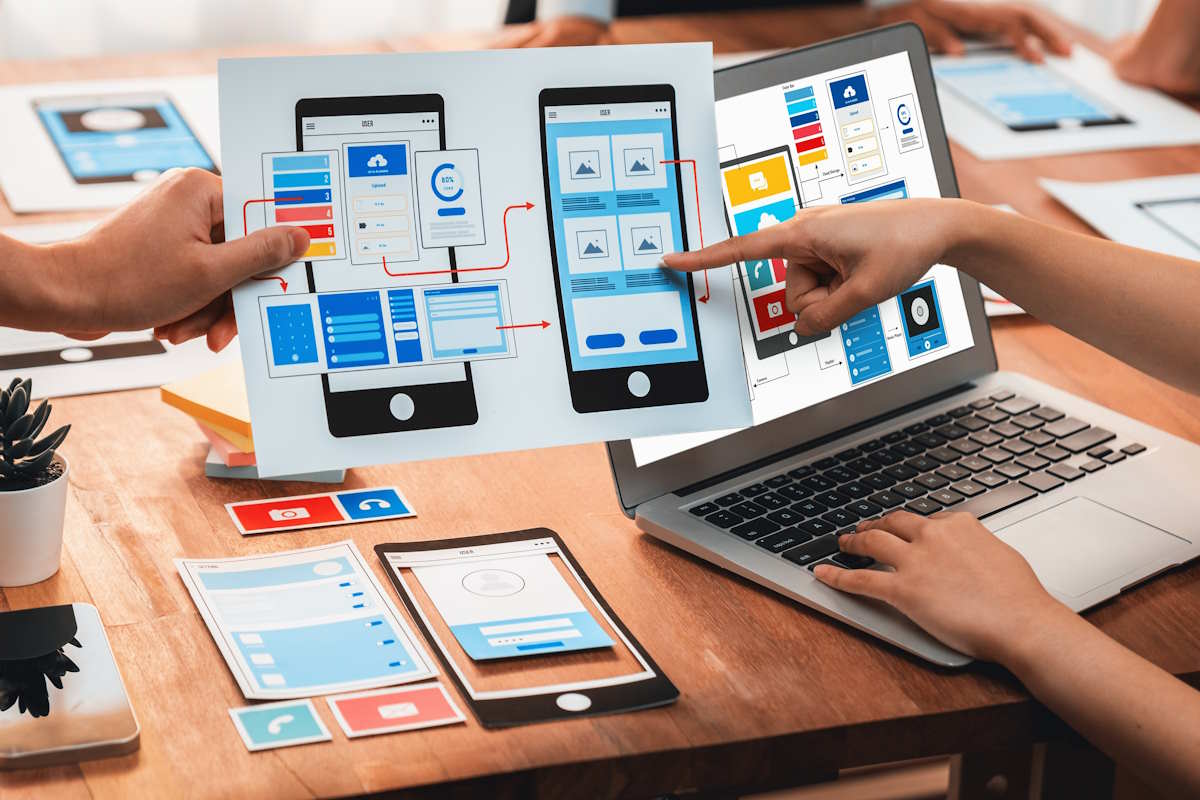Almost every start-up is powered by an innovative idea meant to change the way things work across the world. However, numerous entrepreneurs toil to come up with a perfect product, only to find out later that it is trying to solve a non-existent problem.

What leads to all of this? Typically, all these brilliant ideas are based on untested assumptions. By this yardstick, it certainly makes one wonder—how do you know for sure your next project embodies the customer’s needs? That is exactly where the notion of MVP comes from.
Great strategy for startups to explore the market at very few costs and with much lesser time without introducing the complete product. So, our team is excited to walk with you on this entrepreneurial journey.
Understanding a Minimum Viable Product (MVP)
Since the definition of MVP can be a bit ambiguous due to multiple interpretations, in essence, it means building a product with the fewest features to satisfy early adopters who will then offer feedback on it and further development. One thing that this ensures is the functionalities will directly cater to the needs of the user and, in the process, enhance the product.
Why You Would Want to Build an MVP
MVPs are involved in quick product releases, in strong ideas that are budget-constrained. In fact, they allow businesses to determine the most important features from a user perspective and eliminate any that are not important. It can also appraise market viability and can provide priceless user data that a business can use to guide long-term product strategy.
Quantitative Perspective of the Relevance of MVPs
• 44% of the failures of startups are brought about by poor financial management and cash flow problems.
• Startups that grow properly are significantly faster than startups that take off too soon.
These figures highlight the many benefits of embarking on your product development process with an MVP. Startups develop an MVP for a variety of reasons:
- Developing a draft model to provide something concrete for people to refer to and on which to base discussion – Using test products with end users and engaging potential customers.
- Going from MVP to full product after detailed development of it is an important milestone in moving forward with product development

MVP Development Stages
- Business and Marketing: Releasing an MVP will help you to identify the best marketing strategies and platforms where the product can effectively be promoted.
- Proof of Concept: An MVP provides all necessary technical proof, from which a business can later improve on the product to leave competition in the dust.
How to make a Minimum Viable Product (MVP)
Creating an MVP focuses on launching a functional product that delivers value while minimizing both costs and risks. This process often involves custom MVP software development, which allows you to tailor the features and functionality specifically to your target users and market. Engaging in custom development ensures that your MVP perfectly aligns with your business objectives and user needs. It also allows you to gain a deeper understanding of your target market and user base. An MVP can be instrumental in showcasing your business’s potential to stakeholders, thereby securing necessary funding and support.
Step-by-Step Guide to Build a Successful MVP :
1. Name the Problem
Creating an MVP is initially about understanding the problem your product is meant to solve. It includes understanding what the potential users require and how you intend to alleviate that using your product. And it’s at this stage where you have to take initial feedback from your target audience. Some key questions include:
- What need does my product specifically meet?
- How does it make the lives of its users better?
- What would my consumers prefer in my product than in other products?
Answering these questions supports you in forming a purposeful and focused MVP.
2. Market Research
Then, as soon as you have a clear product idea, the second immediate step is to know your market. Most of the start-ups fail because they lack complete knowledge of the market that they are entering, generally saturated with similar kinds of products. Full-fledged market research would include:
- Competitor Analysis: This is an evaluation of the strengths, weaknesses, opportunities, and threats of your competitors with respect to their pricing strategies and product offers, hence enabling a clear understanding of such elements and consequently identifying opportunities for product differentiation.
- Trend Analysis: Stay current with present trends that affect the target market and user preference. This shall ensure your product remains relevant and attractive.
3. Define Your Unique Value Proposition
You now have insights from your market research and an understanding of the problems your users have, so it is time to define what the unique value proposition of your MVP is. That is, select those features that address the core needs of your customers but differentiate your product from others that may be on the market. Prioritize those features that are a must-have for the MVP and tag some other “nice to have” features for future development steps.
4. Create Marketing Assets and a Marketing Plan
Aligning the marketing with the product development team can go a long way toward the success of the product. Do the due diligence in product branding, ensuring that the product name is unique and not infringing. Check for foreign words that may detract from the product name. And work on imagery to represent the product.
You do not need to spend a lot of time. For instance, a free AI logo maker, lets you easily create a unique and customizable logo that lets your MVP brand’s personality shine through. Having the assets from the start, helps the production team to focus and inspires them to fulfill a more coherent product vision.
5. Build, Measure, Learn
The development of an MVP follows an iterative process and is based on the ‘Build, Measure, Learn’ circle of Lean Startup. It can be disassembled into:
- Build the MVP: Construct the most minimal version of your product that includes all core features essential to solving the identified problem.
- Measure User Interaction: Once the MVP is ready, measure users’ interaction using such tools as direct user testing, surveys, and analytics.
- Learn and Iterate: Use the feedback you receive to continue refining and improving your product. In fact, this cycle supports informed decisions in developing and scaling further.
Following these steps will enable you to develop an MVP that can satisfy the immediate needs of your users and lay a good basis for further improvements and growth. Developing custom software for your MVP can be one way to ensure that the project becomes a key strategic success factor for your business.

Creating an MVP: Key Errors to Avert
When building an MVP, one must be prepared for a problem to take further, risk-reducing actions. Here are some of the typical mistakes not to make upon releasing your product in its first iteration:
- Over-Engineering the Product An MVP is basically a pared-down version of your product made to test out the main features and functionalities. At this point, avoid overcomplicating or over-refining the product because it will probably delay the development process and distract from the core value proposition.
- Ignoring User Feedback What most MVPs have in common is that user feedback drives the real value. A consumer must have a firm understanding of your product to make full use of it. But no matter how sophisticated your design or performance optimization is, nothing can compensate for an idea that doesn’t appeal to your audience. Be rigorous with consistent collection of feedback, use it for enhancement in user experience, and let each voice of your customer be heard.
- Cutting Costs Bloody-mindedly While it is important to not overspend on non-essential features, then being too frugal will be equally damaging. Key features need to be developed to a high quality to ensure your product will be viable from the start. Cutting costs on those critical features of your product may lead to a very early end.
This way, by avoiding common mistakes in creating your MVP, you can do it on a firm basis with high chances for subsequent success in developing your product and penetrating the market with it.
Conclusion
Creating a successful Minimum Viable Product is one of the biggest mile markers for a startup looking to launch a game-changer. The MVP concept thus allows startups to put into tests, iterations, and validations of their business ideas with little risk and minimal investment. From identifying user needs and intensive market research to carving out unique propositions and going through an iterative development process, it’s been the path followed from an idea to an in-market-tested product.
Startups should focus on developing the product to satisfy some real needs and use the feedback from it to iterate and polish the product. This will avoid common mistakes: over-engineering, ignoring user feedback, and cutting costs too hard. Not only can they validate a startup or lay down a firm base for its future growth and scaling, but they can also prioritize features, maintain quality, and make the business concept viable.
Above all, an MVP can only be viable if it can meet the early customers’ requirements and supply the creators with insights regarding market dynamics and user preferences. Properly planned, carried out, and adjusted, thus these startups will transform the innovative ideas into a viable product that will now be ready for the marketplace. This strategic approach ensures resource utilization is efficient, where the product developed finally is not just a concept but a market-ready solution that resonates with its intended audience.




















